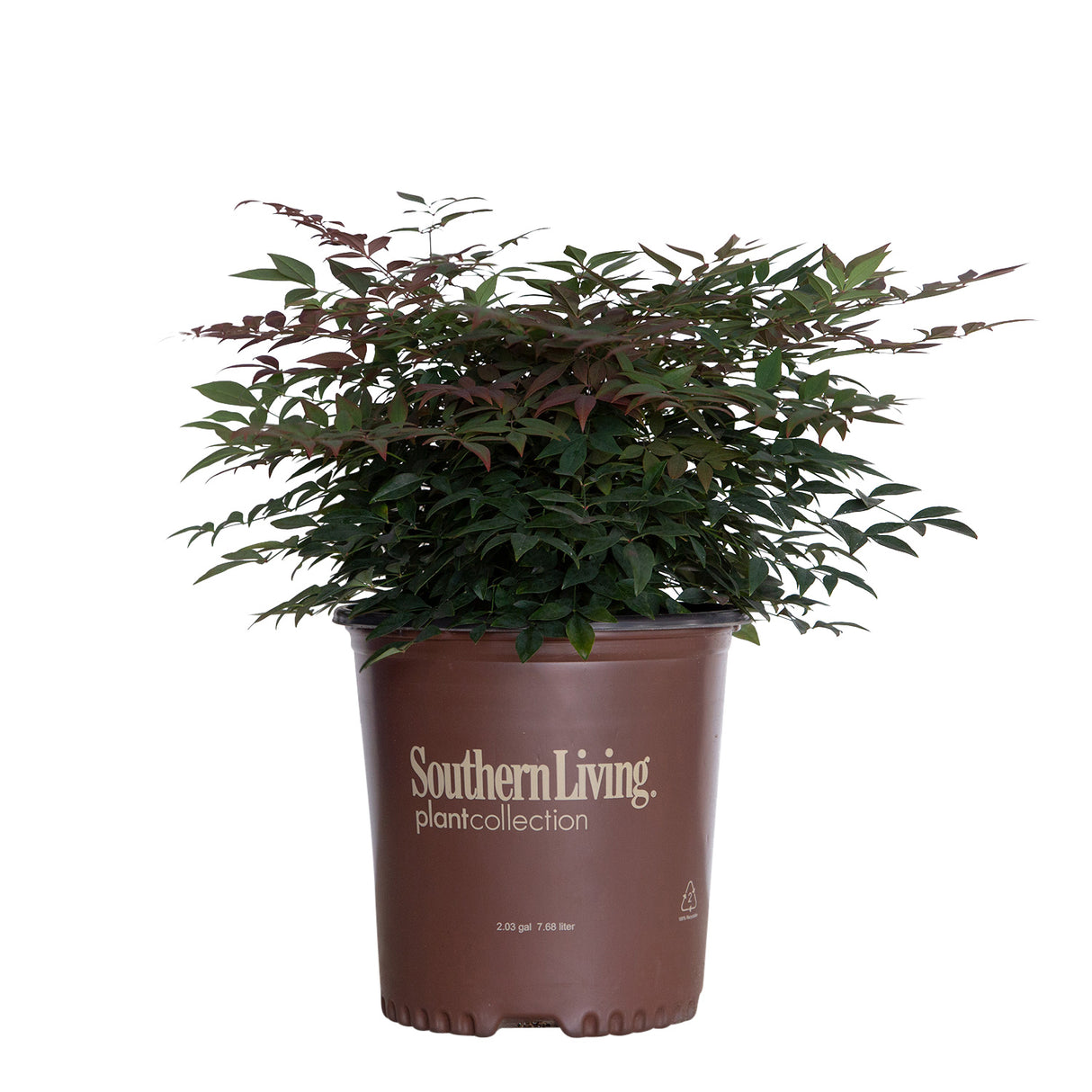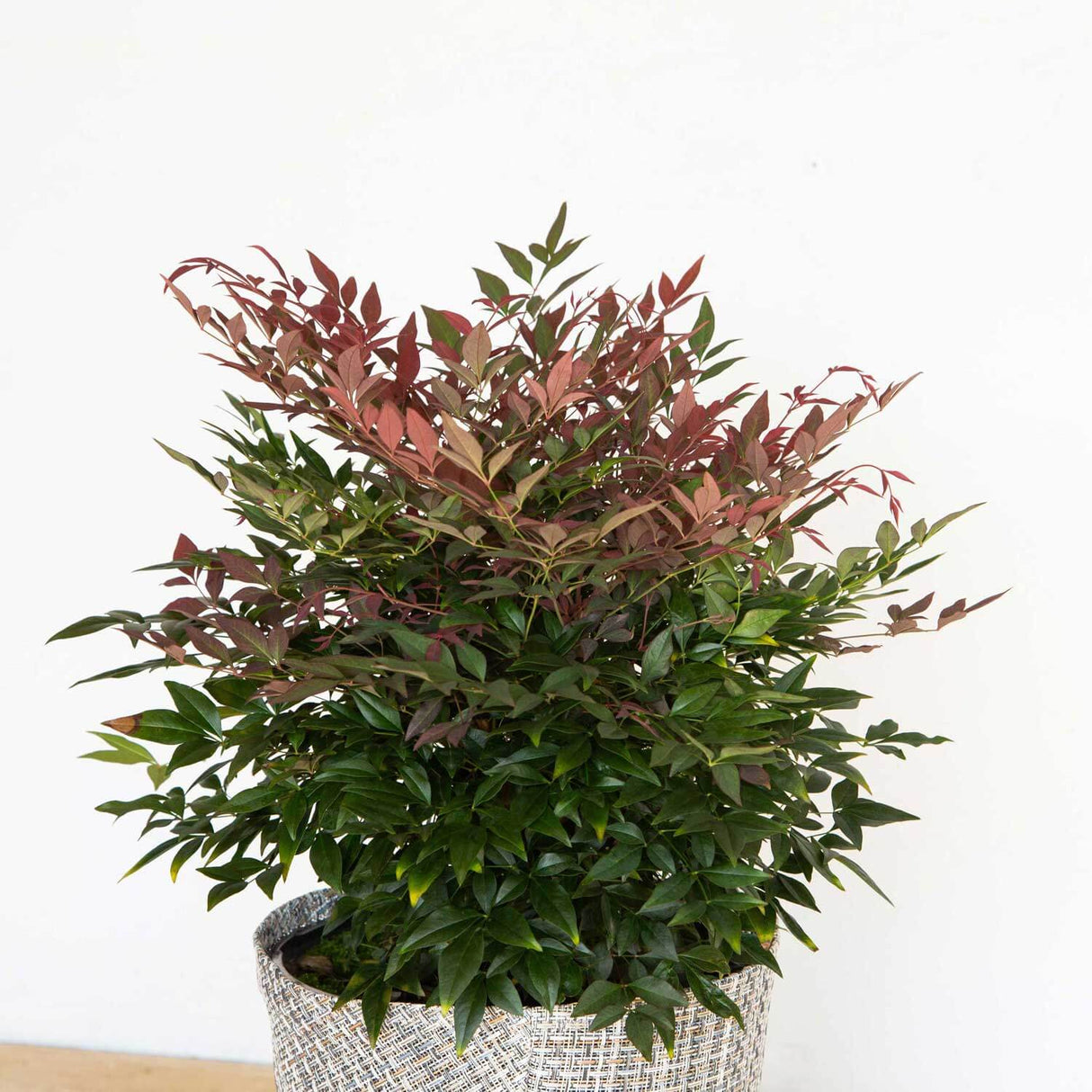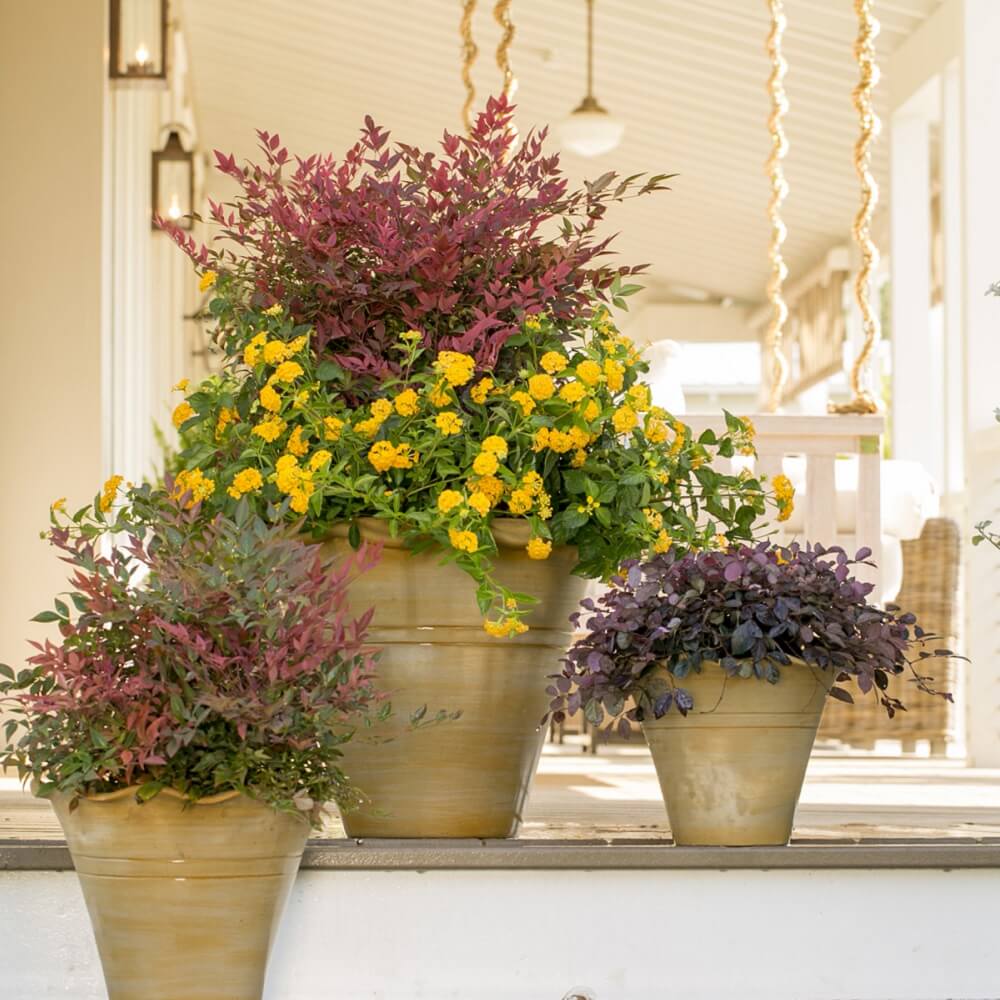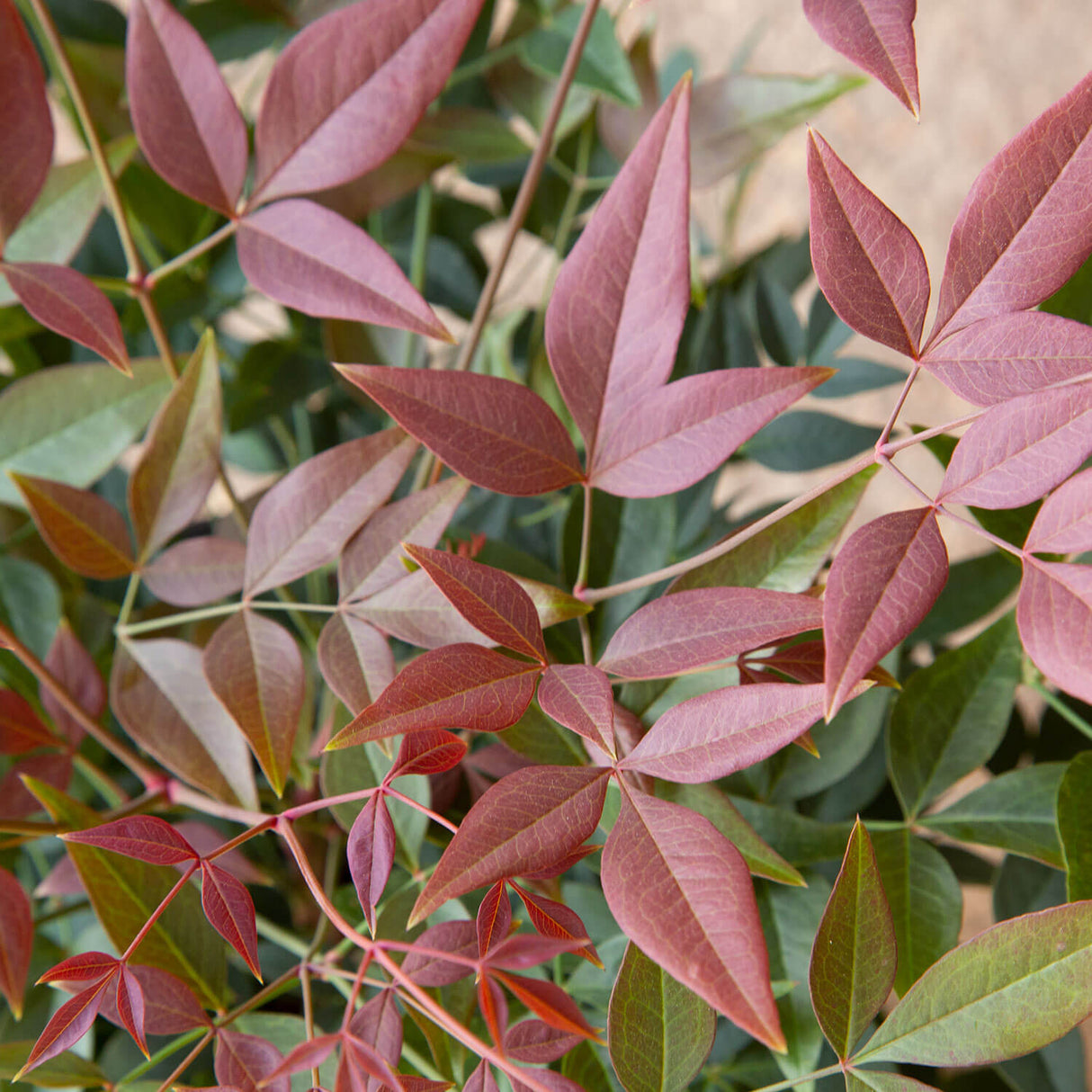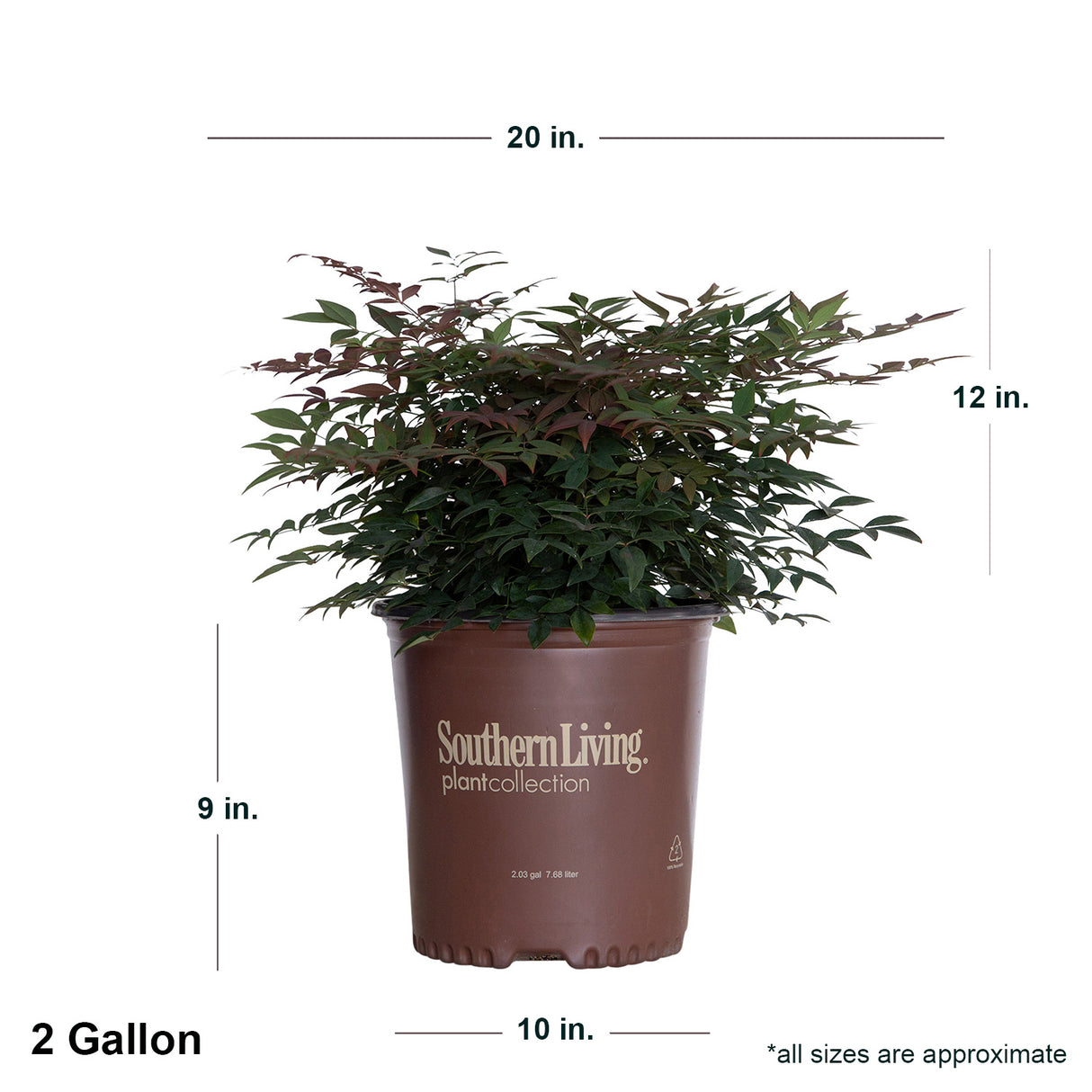Obsession Nandina
Obsession Nandina - 2.5 Quart is backordered and will ship as soon as it is back in stock.
Description
Description
The Obsession™ Nandina from the Southern Living Plant Collection is a new and unusual variety of the classic Nandina domestica. The Obsession features unique scarlet-red young foliage and blue-green mature foliage. This gorgeous medley brings tremendous texture and color-appeal to any landscape or container garden all year long! This is because it's naturally evergreen, so it won't leave your landscape barren once winter rolls around.
It's particularly hardy in favorable landscapes and it has a naturally compact growth habit that doesn't require any extra pruning. Expect this shrub to max out at 3-4' H x 3-4' W. This is a welcome change from traditional nandinas that are known for getting tall and leggy.
It's great for usage as a medium-height accent, hedge, mass planting, or border plant, and will really shine when planted with contrasting colored plants.
Use it to soften hard edges in your landscape, whether that's at the base of a building or around a birdbath.
Due to its low-maintenance nature, consider using a bunch of them as a mass planting in a location you don't want to worry about maintaining, such as a slope.
Frequently Asked Questions:
"Is the Obsession Nandina Invasive?"
No! This is a sterile Nandina variety, therefore, it will not reseed in your environment and go wild.
"Does the Obsession Nandina Produce Toxic Berries?"
No! Because this plant is sterile, it isn't capable of producing the bright red toxic nandina berries that birds, unfortunately, often partake in.
Care Specifications
The Obsession Nandina is hardy from USDA Zones 6-10 and can withstand temperatures down to -10 degrees Fahrenheit. However, we do recommend providing some overnight hard-freeze coverage during its first winter in your landscape.
Heavenly Bamboo tolerates Full Sun and Partial Sun very well. Very hot areas, like USDA Zones 9 & 10, will likely have better luck in Partial Sun.
Water 2-3 times per week for the first growing season. Once established, you'll only need to water this shrub during times of extended drought.
Plant in well-drained average-quality garden soil.
Fertilize with a balanced, slow-release fertilizer in early spring to promote new growth.
How to Plant Obsession Nandinas
- First, determine the planting location(s) for your new plants.
- You'll need to dig a hole three times the width of your plant’s rootball and deep enough that the top of the plant’s root ball is level with or slightly above the native ground.
- Mix the soil you removed from the hole with a bag or two of rich garden soil or composted manure to provide additional nutrients for your growing plant.
- If your soil is clay-rich, we recommend mixing pine bark in with your native soil at a ratio of about 1:1 to help improve the drainage and breathability of the soil.
- Place the plant in the hole and fill it back up with your soil mixture.
- We also recommend applying 3-4 inches of wood mulch around the base of your plant to help it retain moisture.
- Give your new planting a healthy soaking with your hose to settle the dirt and hydrate the plant.
Planting tips for Acid Loving Plants
Popular Companion Plants
Try planting this Southern Living plant with brilliantly colored plants. The Everillo Carex is a fantastic contrast candidate that features long grass-like, bright yellow-green foliage that contrasts very well with the Obsession's upright, spade-shaped leaves. Another great choice is the Neverland Agapanthus. It features bright variegated foliage straps and lavender purple flower stalks that really pop with darker foliage.
Planting a sunny mixed garden bed? This variety accents beautifully with Sunshine Ligustrum. Feel free to let them both grow freely too. Throw in a few naturally rounded boxwoods, like the Baby Gem Boxwood, and you've got quite a low-maintenance garden display on your hands.
Care & Use
Care & Use
Spacing Recommendations
Spacing Recommendations
-
Scientific Name
-
Hardiness Zone6, 7, 8, 9, 10
-
Sun ExposurePart Sun to Part Shade
-
Evergreen or DeciduousEvergreen
-
FeaturesDisease Tolerant, Dwarf, Winter / Fall Foliage Color, Variegated
-
Feature ColorGreen, Red
-
UsesBorder, Container, Foundation Planting, Mass Planting
-
Water NeedsMedium
-
Bloom SeasonNone
Growing Zones : 6, 7, 8, 9, and 10

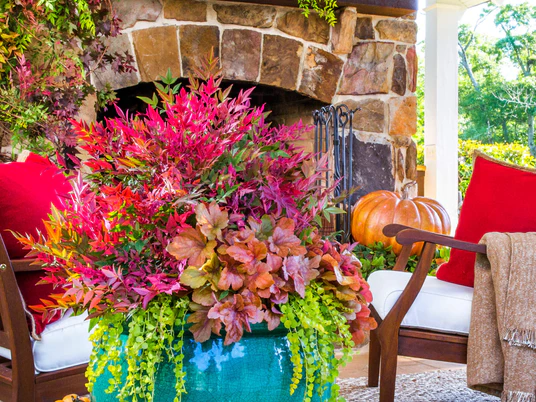
Southern Living Plants

